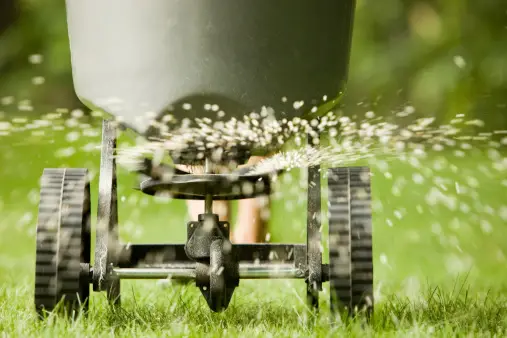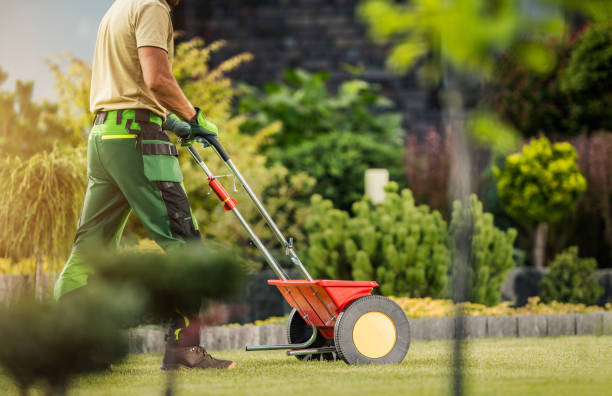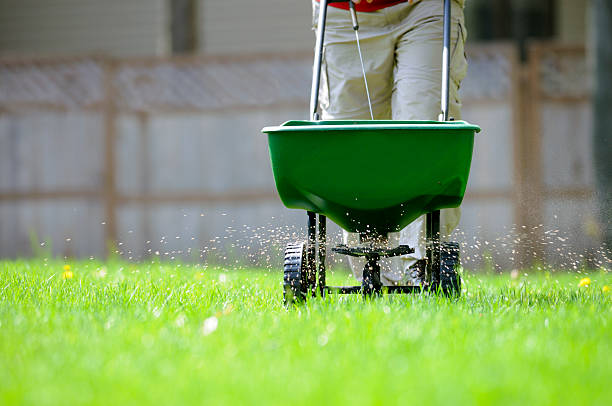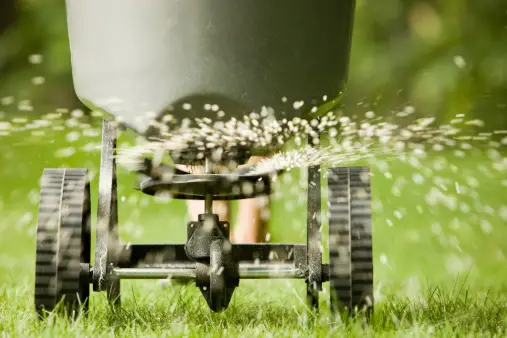Fertilization Is The Key To Growth
Fertilization plays a crucial role in promoting healthy plant growth and maximizing crop yields. It involves the application of essential nutrients to the soil or plants to replenish deficiencies and provide optimal nutrition. In this article, we will explore what fertilization is, why it is important, and the benefits it offers to plants and agriculture.

Understanding Fertilization
Fertilization supplies plants with essential nutrients, such as nitrogen, phosphorus, potassium, and micronutrients necessary for their growth, development, and overall health. These nutrients are naturally present in the soil, but their availability can diminish over time due to plant uptake, leaching, erosion, and other environmental factors.
To address nutrient deficiencies and maintain optimal soil fertility, fertilizers are used to supplement the existing nutrient levels. Fertilizers can be organic, derived from natural sources such as compost, manure, or inorganic, and synthesized through chemical processes. They are available in various forms, including granules, powders, liquids, and slow-release formulations.
Importance of Fertilization
Fertilization plays a vital role in sustaining agriculture and horticulture. Here are some key reasons why fertilization is important:
1. Nutrient Supplementation
Plants require a range of nutrients to carry out essential biological processes, including photosynthesis, root development, and flowering. Fertilizers provide these nutrients in the right proportions, ensuring that plants have an adequate supply for optimal growth. By replenishing nutrient deficiencies, fertilization enhances plant vigor, health, and productivity.
2. Increased Crop Yields
Proper fertilization practices contribute significantly to increased crop yields. When crops receive the necessary nutrients in optimal amounts, they can achieve their full genetic potential, resulting in higher harvests. Fertilization strategies tailored to specific crops and soil conditions can maximize nutrient uptake, leading to improved yield quality and quantity.
3. Soil Fertility Maintenance
Continuous cropping and plant uptake gradually deplete the nutrient content in the soil. Fertilization helps maintain soil fertility by replenishing the nutrients that are removed during plant growth. By preventing nutrient depletion, fertilization ensures that the soil remains productive and capable of supporting healthy plant growth over multiple seasons.
4. Correcting Nutrient Imbalances
Different plants have specific nutrient requirements, and imbalances can lead to nutrient deficiencies or toxicities. Fertilization allows for the correction of nutrient imbalances in the soil, ensuring that plants receive the nutrients they need in the right proportions. This promotes balanced growth, reduces the risk of nutrient-related disorders, and improves overall plant health.
5. Environmental Stewardship
Proper fertilization practices are essential for environmental sustainability. By providing plants with the nutrients they need, fertilization reduces the risk of nutrient runoff and leaching, which can contaminate water bodies and harm aquatic ecosystems. Balancing nutrient applications also helps minimize the environmental impact of excessive fertilizer use.
When it comes to fertilizing your crops or plants, choosing the right application method is crucial for maximizing nutrient uptake and ensuring healthy growth. While there are many different methods that are used in fertilization, two of the most popular methods of fertilizer application are topdressing and broadcasting. Let’s explore the differences between these two methods, their advantages and disadvantages, and which one is best suited for different situations.

Topdressing: Enhancing Nutrient Availability
What is Topdressing?
Topdressing is a fertilizer application method where granular or powdered fertilizers are applied directly to the soil surface around the base of plants. It involves evenly spreading a thin layer of fertilizer over the soil, ensuring that the nutrients come in direct contact with the plant roots.
Benefits of Topdressing
Topdressing offers several benefits for plants and crops:
- Targeted Nutrient Delivery: By applying fertilizers directly to the soil surface, topdressing allows for targeted delivery of nutrients to the root zone, where they are needed the most.
- Improved Nutrient Efficiency: Since topdressing places the fertilizer near the roots, it minimizes the risk of nutrient leaching or runoff, ensuring that the plants can efficiently utilize the applied nutrients.
- Reduced Weed Competition: By applying fertilizers only around the base of plants, topdressing minimizes the risk of promoting weed growth, as opposed to broadcasting methods that spread fertilizers over a wider area.
When to Use Topdressing?
Topdressing is particularly beneficial in the following situations:
- Established Plants: Topdressing is commonly used for established plants, such as trees, shrubs, and perennials, where precise nutrient delivery is essential.
- Nutrient Deficiencies: If a soil test indicates specific nutrient deficiencies, topdressing can target those deficiencies and directly provide the necessary nutrients to the plants.
- Maintenance Fertilization: For maintaining healthy growth in lawns or turfgrass, topdressing can be used to provide a slow-release source of nutrients over time.
Broadcasting: Wide-Scale Nutrient Application
What is Broadcasting?
Broadcasting is a fertilizer application method where granular or powdered fertilizers are spread over a wide area using a broadcast spreader or by hand. The fertilizer is evenly distributed across the soil surface, covering a larger area compared to topdressing.
Benefits of Broadcasting
Broadcasting offers several advantages for fertilizing large areas:
- Efficiency: Broadcasting allows for quick and efficient application of fertilizers over large areas, reducing the time and labor required compared to more targeted methods.
- Uniform Coverage: By spreading the fertilizer evenly, broadcasting ensures that nutrients are distributed across the entire area, providing a consistent nutrient supply for plants.
- Cost-Effectiveness: Broadcasting is cost-effective, especially when fertilizing large agricultural fields or expansive lawns, as it requires less manual effort.
When to Use Broadcasting?
Broadcasting is commonly used in the following scenarios:
- Large-Scale Agriculture: Broadcasting is ideal for fertilizing large agricultural fields, where efficiency and uniform nutrient distribution are essential for crop growth.
- Cover Crops and Pastures: When establishing cover crops or fertilizing pastures, broadcasting is a practical method for providing nutrients to a wide area.
- Initial Soil Preparation: Broadcasting can be used during initial soil preparation to provide a baseline level of nutrients for future planting.

Frequently Asked Questions
Is topdressing suitable for all types of plants?
Topdressing can be used for various types of plants, including trees, shrubs, perennials, and even lawns. However, it is essential to consider each plant’s specific nutrient requirements and growth habits to determine if topdressing is the appropriate method for fertilizer application.
Can broadcasting lead to fertilizer wastage?
Broadcasting, if not done carefully, can result in fertilizer wastage. The risk of nutrient leaching or runoff increases when fertilizers are spread over a wide area. To minimize wastage, following recommended application rates, avoiding over-application, and considering factors such as soil conditions, weather, and plant nutrient requirements is advisable.
Which method is more cost-effective?
The cost-effectiveness of topdressing vs. broadcasting depends on the scale of the application. For smaller areas or targeted plantings, topdressing may require less fertilizer and provide more precise nutrient delivery, making it cost-effective in those cases. Broadcasting is more efficient and cost-effective for large-scale applications, such as agricultural fields or expansive lawns.
Are there any environmental concerns associated with these methods?
Both topdressing and broadcasting can have environmental implications if not performed responsibly. Excessive use of fertilizers or improper application techniques can lead to nutrient runoff, contaminating water bodies and causing ecological damage. Following best practices, considering environmental factors, and adhering to local regulations to minimize environmental impacts is crucial.
Can topdressing or broadcasting be used with organic fertilizers?
Yes, both topdressing and broadcasting can be used with organic fertilizers. Organic fertilizers come in various forms, including granular and powdered options, making them suitable for these application methods. When using organic fertilizers, following the manufacturer’s instructions for application rates and techniques is important.
Which method is better for precision nutrient management?
Topdressing is considered superior for precision nutrient management, as it allows for targeted delivery of nutrients to specific plants or areas. This method enables growers to address nutrient deficiencies or tailor nutrient applications based on the specific needs of individual plants. Broadcasting, on the other hand, provides a more general nutrient distribution over a larger area.
Knowing Means Growing…Right
Choosing between topdressing and broadcasting for fertilizer application depends on factors such as the type of plants, the scale of the application, and the desired precision of nutrient delivery. Topdressing offers targeted nutrient delivery and reduced weed competition, making it suitable for established plants and addressing specific nutrient deficiencies. Broadcasting, on the other hand, provides efficiency and uniform coverage, making it ideal for large-scale agriculture and initial soil preparation. By understanding the benefits and considerations of each method, growers can make informed decisions to optimize fertilizer application and promote healthy plant growth. Now that you know what to look for, you can take comfort in your decision and look forward to successful fertilization.

